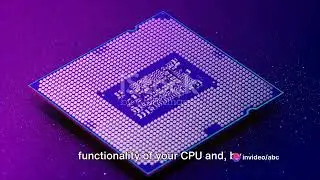Procedures in assembly language
Procedures in assembly language, also known as subroutines or functions, are a way to modularize code by encapsulating specific tasks or operations into reusable units. Writing procedures helps improve code organization, readability, and maintainability. Here are the key concepts and steps involved in working with procedures in assembly language:
1. Procedure Definition:
Define a procedure by using a label followed by a meaningful name. The label indicates the starting point of the procedure. For example:
assembly
Copy code
; Procedure to add two numbers
AddNumbers:
; Procedure code goes here
2. Procedure Parameters:
If the procedure requires input parameters, these can be passed through registers or the stack. Similarly, output values can be returned through registers or memory locations.
3. Saving and Restoring Registers:
If the procedure modifies certain registers, it's important to save their original values at the beginning of the procedure and restore them before exiting. This ensures that the procedure does not interfere with the calling code.
4. Procedure Body:
Write the actual code for the procedure within its labeled block. This code should perform the specific task or computation the procedure is designed for.
5. Procedure Exit:
Include an instruction to return from the procedure, typically using the RET (return) instruction. Before returning, restore any modified registers to their original values.
assembly
Copy code
AddNumbers:
; Procedure code goes here
RET
6. Calling a Procedure:
To call a procedure from another part of the code, use a CALL instruction followed by the label of the procedure. This transfers control to the procedure and executes its code.
assembly
Copy code
; Calling the AddNumbers procedure
CALL AddNumbers
7. Parameter Passing:
If the procedure requires parameters, these can be passed through registers or the stack. Ensure that the calling code and the procedure agree on the parameter passing mechanism.
assembly
Copy code
; Passing parameters through registers (example with x86 architecture)
MOV AX, 5
MOV BX, 7
CALL AddNumbers
8. Stack Usage:
Procedures often use the stack to store local variables and other information. Properly manage the stack by allocating space for local variables and cleaning up the stack before returning.
9. Nested Procedures:
Procedures can call other procedures, leading to nested calls. When doing so, be mindful of register usage, parameter passing, and stack management to avoid conflicts.
Example (x86 Assembly):
assembly
Copy code
section .text
global _start
; Procedure to add two numbers
AddNumbers:
MOV EAX, [ESP + 4] ; First parameter
MOV EBX, [ESP + 8] ; Second parameter
ADD EAX, EBX ; Add the numbers
RET
_start:
; Calling the AddNumbers procedure
MOV ECX, 10
MOV EDX, 20
PUSH EDX ; Push second parameter
PUSH ECX ; Push first parameter
CALL AddNumbers
; Result is now in EAX
; Further code goes here...
; Exit the program
MOV EAX, 1 ; System call number for exit
XOR EBX, EBX ; Exit code 0
INT 0x80 ; Invoke the kernel
This example demonstrates a simple assembly program with a procedure (AddNumbers) that adds two numbers. The calling code passes parameters through the stack, and the result is returned in the EAX register.







![5 новых морфов в [🙌NEW] Backrooms Morph](https://images.videosashka.com/watch/Dow8idv681s)











